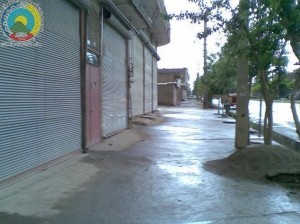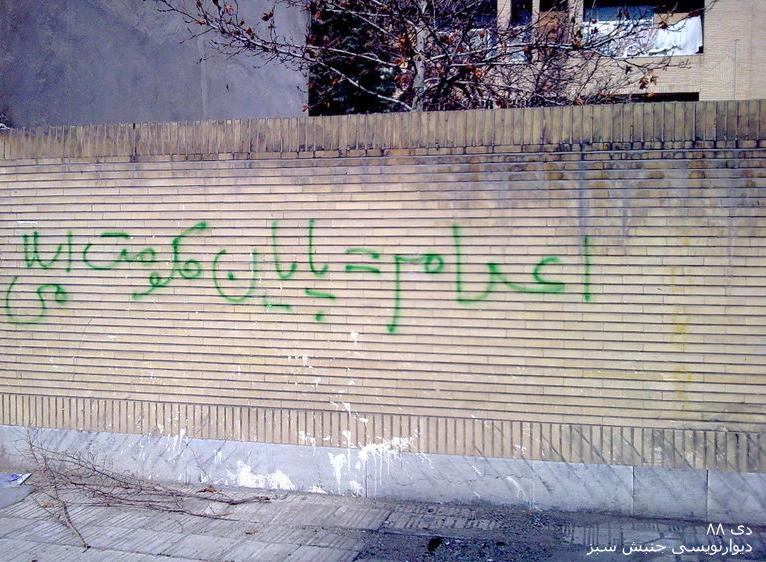 Writing for The New York Times, Seth Mydans summarises Friday's violent escalation in Thailand's political crisis. Jason Szep and Ambika Ahuja, reporting for Reuters, add information on the roots of the conflict:MYDANS
Writing for The New York Times, Seth Mydans summarises Friday's violent escalation in Thailand's political crisis. Jason Szep and Ambika Ahuja, reporting for Reuters, add information on the roots of the conflict:MYDANSThai troops on Friday fired tear gas and bullets at protesters, who responded with stones, slingshots and homemade rockets, turning parts of downtown Bangkok into a battlefield as the military tried to tighten its cordon around a broad area where the protesters have camped for weeks.
Sixteen people were killed and 141 wounded, according to the government-run Erawan medical center, in some of the worst violence in two months of unrest. The standoff has paralyzed the Thai government and further fractured a society struggling to cope with the growing demands of its poor.
The fighting followed an assassination attempt on Thursday on a
renegade general who had declared himself a protector of the protesters before he was critically wounded by a sniper’s bullet.
The antigovernment protesters, mostly poor rural residents known as red shirts, seized and vandalized several military vehicles, setting at least one truck on fire and cheering as soldiers with riot shields looked on. Protesters pulled soldiers from their vehicles and beat them severely.
Plumes of black and brown smoke rose into the air, and large explosions and gunfire were heard well into the night.
On Friday, streets that would normally have been bustling with traffic were instead littered with stones and bottles and sealed off by soldiers building roadblocks with sandbags and coils of razor wire.
Troops in battle gear crouched behind traffic barriers, pointing their rifles at the bands of motorcycle riders who formed a mobile force for the protesters, while other troops ran along a highway overpass as traffic crawled behind them.
Although the violence has been confined largely to the city’s central area, reports of the political chaos in recent months have hurt tourism, one of the country’s main industries, and left some hotels in the downtown area just 20 percent full.
The army officer who was shot Thursday, Maj. Gen.
Khattiya Sawatdiphol, was on life support late Friday, and his doctor said his chances of survival were “almost nil.”
Thai officials had blamed General Khattiya for playing a part in earlier violence and for blocking any chance of peace with protesters. Leaders of the red shirts had also disavowed him, but he nevertheless took control of security for the protesters and was supported by a small, hard-line group of demonstrators.
On Friday, amid the sounds of gunfire and explosions, the United States Embassy, which is near the disturbances,
shut down and offered voluntary relocation to employees who lived near the protest area. Other nearby embassies, schools and businesses also closed.
If it is not contained, the violence could widen into the kind of broader conflict that the government has been trying for weeks to avoid. Just several days ago, it appeared the long sit-in might end peacefully when the government offered to move up elections, a proposal that won tentative support from protest leaders.
But that support began faltering even before the general was shot, as the opposition movement bickered over whether the government was doing enough to meet its demands, including the dissolution of Parliament and the holding of a new election.
In response, the government withdrew its offer of an early election and said it would no longer negotiate with the red shirts.
Protest leaders have said that if the military tries to disperse them, supporters elsewhere in the country may stage similar takeovers of streets or government buildings.
However the occupation of parts of the capital ends, deep divisions and tensions are likely to persist in a country that is increasingly split between its poor and its urban elite. Over the past four years, political and personal enmities have hardened, making reconciliation more difficult.
Inside the barricaded protest area on Friday, leaders addressed thousands of demonstrators, vowing to hold their ground and resist any military incursion. “They are tightening a noose on us, but we will fight to the end, brothers and sisters,” one leader, Nattawut Saikua, told the crowd.
Another leader, Kokaew Pikulthong, issued what appeared to be a veiled threat to the government. In the event of a crackdown, he said in a telephone interview, protesters may be forced to break into shopping malls “to survive.”
The protest area, covering about one square mile on roads that surround a major intersection, has grown filthy and fly-infested, with garbage stacking up since the government cut off waste collection and water deliveries for the rally’s storage tanks.
The deputy governor of Bangkok, Pornthep Techapaiboon, said that portable toilets in the protest area would remain in place for sanitary reasons, but that the workers who cleaned them had already withdrawn after being assaulted by protesters.
Because of new military checkpoints, the protesters, who sleep on mats on the street, can leave the site if they choose, but are not being allowed to return.
Those wounded in the clashes on Friday included a camera operator for a French television station and a Thai photographer, both of whom had been shot.
At the perimeters of the conflict zone, demonstrators poured gasoline over high barricades of concrete blocks, tires, barbed wire and sharpened bamboo poles, threatening to ignite them if attacked. They splashed oil on the street in front of one barricade and scattered pellets to create a slippery dry-land moat.
Protesters attached homemade explosives to the ends of sticks, as they do during a traditional rocket festival, propping them inside plastic traffic cones before aiming and sending them with a whoosh in the direction of soldiers. They also fired in the direction of military helicopters.
Some protesters wore motorcycle helmets and carried homemade weapons, including bows and arrows, slingshots and sharpened bamboo poles.
Some prepared to fling plastic bags filled with pungent fish sauce and hot chilies at soldiers.
A man who identified himself as John Redshirt, a disc jockey for an antigovernment radio station, watched as men sat on the ground in a makeshift workshop constructing crossbows from plastic pipe and bamboo.
“We are never scared of the military,” he said in English. “If they come, we have the right to fight back. We can’t just let them kill us and do nothing.”
A nurse at a first aid station inside the camp, Jenny Tan, 56, spoke of possible worsening violence with tears in her eyes.
“We are afraid for the soldiers, too,” she said. “The soldiers are our sons. We are mother, father, sister, brother. So we don’t want any of them to die. Very, very sad. Very, very sad for
Thailand.”
---
SZEP/AHUJAThai troops fired at protesters on Saturday in a third day of fighting on Bangkok's streets that has killed 16 people as soldiers struggle to isolate a sprawling encampment of demonstrators seeking to topple the government.
Clashes continued across central Bangkok as soldiers behind sand bags or atop buildings fired live rounds at protesters armed with petrol bombs. One was shot in the chest while trying to ignite a tyre in Bangkok's usually bustling business district.
At Din Daeng intersection, north of the protest site, three bodies were evacuated on stretchers, a Reuters witness said. Two suffered head wounds. Troops also swarmed into a parking lot at the popular Dusit Thani hotel outside the protest site.
That followed a long night of grenade explosions and sporadic gunfire as the army battled to set up a perimeter around the 3.5 sq-km (1.2 sq-mile) barricaded encampment where thousands refuse to leave, including women and children.
"We'll keep on fighting," said Kwanchai Praipana, a leader of the red-shirted protesters, calling on Prime Minister Abhisit Vejjajiva to resign and take responsibility for Thailand's deadliest political crisis in 18 years.
He said supplies of food, water and fuel were starting to run thin as their usual delivery trucks were blocked but that they had enough to last "days".
Hardcore protesters, gathering in small numbers, set fire to vehicles, including an army truck, and hurled rocks at troops who set up razor wire at checkpoints and asked residents to show identification cards to stop people from joining the mostly rural and urban poor "red shirts".
The crisis has paralysed Bangkok, squeezed Southeast Asia's second-biggest economy, scared off tourists and choked off investment in one of Asia's most promising emerging markets.
United Nations Secretary-General Ban Ki-Moon expressed concern over "the rapidly mounting tensions and violence".
"He strongly encourages them to urgently return to dialogue in order to de-escalate the situation and resolve matters peacefully," his spokesman said in a statement.
The Canadian government urged both sides to return to talks after a Bangkok-based Canadian journalist was shot three times, one of three journalists wounded in fighting that has spiralled into chaotic urban warfare where front lines shift quickly.
"UNLIKELY TO END QUICKLY"
The government said on Friday it would restore order "in the next few days" as the city of 15 million people braced for a crackdown to end a six-week protest by thousands of "red shirts" packed into an area of high-end department stores, luxury hotels, embassies and expensive residential apartments.
The Erawan Medical Centre in Bangkok said 16 people had been killed and 141 wounded in the latest fighting.
"It's unlikely to end quickly," said a source close to army chief Anupong Paochinda, fearing more protesters would arrive to surround and attack soldiers.
"There will be several skirmishes in the coming days but we are still confident we will get the numbers down and seal the area," added the source, who declined to be identified by name.
The number of protesters in the main encampment appeared to have dropped overnight but several thousands remained, many singing and listening to speeches by protest leaders. Some leaders, including the movement's chairman, have disappeared.
Protesters are barricaded behind walls of kerosene-soaked tyres, sharpened bamboo staves, concrete blocks and razor wire.
Before fighting began on Thursday with the shooting of a renegade general allied with the protesters, the two-month crisis had already killed 29 people and wounded about 1,400 -- most of whom died during an April 10 gun battle in Bangkok's old quarter.
The fighting is the latest flare-up in a polarising five-year crisis between a royalist urban elite establishment, who back the prime minister, and the rural and urban poor who accuse conservative elites and the military's top brass of colluding to bring down two elected governments.
Those governments were led or backed by exiled former premier Thaksin Shinawatra, a graft-convicted populist billionaire ousted in a 2006 coup who is a figurehead of the protest movement.
The red shirts and their supporters say the politically powerful military influenced a 2008 parliamentary vote, which took place after a pro-Thaksin party was dissolved, to ensure the British-born, Oxford-educated Abhisit rose to power.
Five-year Thai credit default swaps, used to hedge against debt default, widened by more than 30 basis points on Friday -- the biggest jump in 15 months -- to 142 basis points.
"With gun battles and grenades going off, investors will look elsewhere," said Danny Richards, an analyst at the Economist Intelligence Unit.
"I don't think many see the end of this protest as the end of the crisis. When there's an election, either side will reject the legitimacy of the other and we'll be back to square one."
 Saturday, May 15, 2010 at 8:17
Saturday, May 15, 2010 at 8:17  Last Saturday, the news struck the media that Mohammed al Fayed, the Egyptian business tycoon, would be selling Harrods. Once surprise settled, the question was, "Who bought it and for how much?"
Last Saturday, the news struck the media that Mohammed al Fayed, the Egyptian business tycoon, would be selling Harrods. Once surprise settled, the question was, "Who bought it and for how much?"




